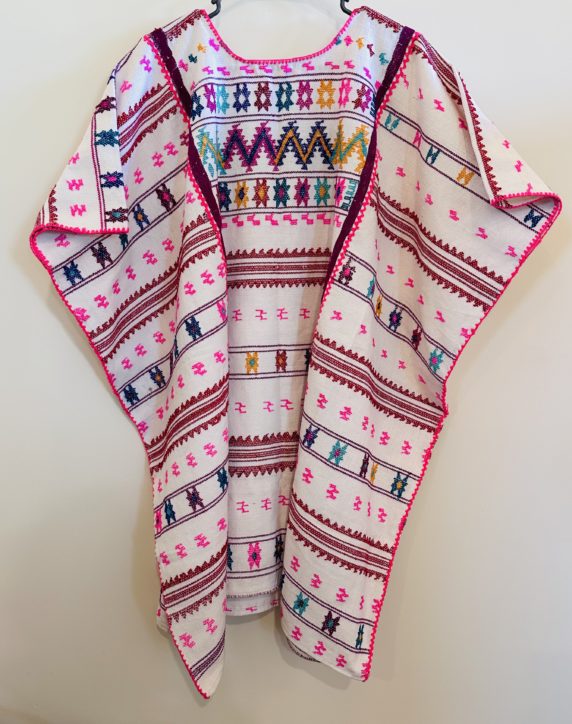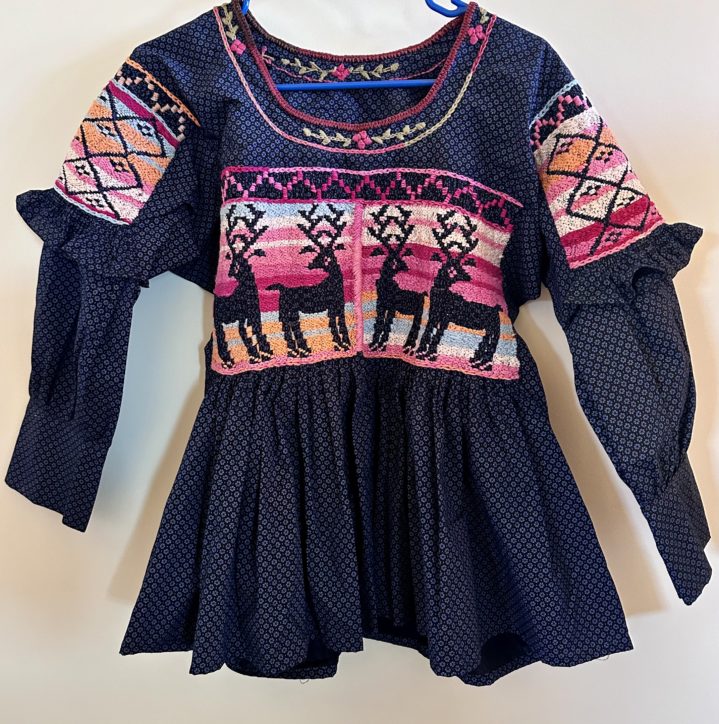Chaco Canyon and Chaco Culture National Historical Park is a remote site operated by the National Park Service in collaboration with the Navajo Nation in the Four Corners Region of New Mexico. The Ancient Puebloans occupied the site from 850 CE to 1250 CE, until a forty-year drought necessitated a gradual migration to the Rio Grande valley where water was more reliable.

The closest lodging is in Bloomfield, NM, about an hour and a half north, although there is camping at the site. Another deterrent, and why there are likely only 60,000 visitors a year here is because 14 miles of the 22 miles off route NM 550 to get there is unpaved. This part of the road is bumpy, winding, filled with pitholes and sinkholes. But, it was definitely worth the zigzagging to get there.


The Ancient Puebloans occupied the three major sites that we visited on this Southwest Road Trip: Mesa Verde, Canyon de Chelly, and Chaco Canyon, plus a fourth site, Casas Grandes, that we did not visit. They built elaborate ceremonial kivas, stone roads that linked these great sites for spiritual journeys, and participated in robust trade of turquoise, shells, pine (piñon) nuts, corn, obsidian, pottery, and woven goods.


This is where we went to view the October 14, 2023, solar eclipse at the crack of dawn.
We returned the next day, not quite as early, to meet up with Gilbert Tsininijinnie, our Diné (pronounced Din-Eh) guide with Navajo Tours USA.

Gilbert shared some of his own personal family history, telling us that he is also part Zia and Jemez, two of New Mexico’s 23 Federally recognized tribes. His Diné (Navajo) antecedents were refugees taken into these two tribes to hide them from being captured and expelled by the U.S. Cavalry. They managed to escape the Long Walk, the expulsion of the Navajo people from their sacred land at Canyon de Chelly. In 1868, when the Navajo were allowed to return to their homeland, Gilbert’s people returned as well.

He was extraordinarily knowledgeable about Chaco Canyon history, explaining the architecture and how the buildings were constructed to line up with the cosmology events of moon and sun cycles that illuminate the niches in the ceremonial kivas.


These people were expert astronomers. At the corners of many buildings, there were observation windows for star gazing. They believed that stars have order and earth is chaotic. The stars gave them a compass to bring order to their lives. The buildings are aligned along solar and lunar axises. Niches in the kiva walls were used for offerings and aligned to be illuminated as the sun moved across the space.


The structures and a myriad of kivas were covered by sand for hundreds of years. Only a small part of it has been excavated. The Navajo Nation has told the National Park Service that they do not want any more of the site to be disturbed. We are able to see two stories of construction, but many of the buildings were four stories high. Today, one to two floors are subterranean.


Chaco Culture National Historical Park is considered to be the most important ancestral homeland for most of New Mexico’s tribal groups.



Here, we saw very early petroglyphs, innovative building techniques from sandstone chipped from the base of nearby cliffs and held together with mud mortar and sandstone shims, and the rubble of giant boulders where Threatening Rock crashed down from the cliffs and crushed 30 rooms at Pueblo Bonito.




Being here after traveling through Monument Valley, Mesa Verde, and Canyon de Chelly gave us a complete, full-circle view of the development of Native America culture, and a deeper respect for the First Peoples who inhabited these lands.
































Oaxaca WARP Conference Kicks-Off with Marta Turok Wallace Keynote Talk
Marta Turok Wallace is a noted applied cultural anthropologist whose specialty is Mexican textiles. A resident of Mexico City with roots in Boston, Massachusetts, USA, (her parents were ex-pats), Marta was invited by program chair Judy Newland to speak at the WARP (Weaving a Real Peace) textile conference held in Oaxaca, June 8-11, 2017.
WARP attendees gather in San Pablo Cultural Center, Oaxaca
More than 70 people attended the conference. They came from Mexico, the USA, Canada, Poland and Russia.
Applied cultural anthropologist Marta Turok Wallace
What Marta talks about concerns all of us who love indigenous textiles and appreciate the people — women and men — who make them. She asks questions, makes observations, offers solutions and consultation. Then she steps back and listens, suggests, guides. She affirms that weavers can create their own destiny, their own future for themselves, their families and their communities. And, that consumers can more fully appreciate the history behind the cloth.
WARP president Cindy Lair welcomes participants
Traditions are powerful in Mexico. Remote villages throughout Oaxaca continue to weave garments using distinctive iconographic designs particular to place. These weavings are rooted in centuries past, worn by grandparents and great-grandparents. There are garments for daily wear and special ceremonial occasions.
Clothing is cultural identity in Mexico. It signifies where you are from and your status in the community.
Teotitlan del Valle weaver Porfirio Gutierrez talks about history, culture
Yet, over time, clothing has changed (think cotton to synthetic threads, hand-spun to machine-spun) based on cost of raw materials, time to make, and influence of current fashion trends in the larger culture. This has an impact on style, design and quality. As villages interact with each other because of communication and ease of transportation, there is design-crossover, too.
What is “pure” or “authentic” is no longer relevant, perhaps. Change happens and it is impossible to keep people in a box doing what they have always been doing to satisfy collectors and appreciators of tradition. What we want to do is encourage innovation, collaboration, independence and economic success.
The inversion graph, an aging population of artisans, copyright M. Turok
Marta showed a slide explaining that there is a 50% loss of traditional artisans in Mexico. Artisans are aging out and so few of the next generation are stepping in to continue the work. She asks, Why is tradition dying out?
Is the acquisition of artesania being abandoned by the consumer? What is happening in the communities to impact this change? What is in need of revitalization? How do you prepare artisans to sell at fairs and expoventas? How do they show things, take orders, fulfill and ship? Are goods priced fairly for the amount of time put into making them? What are people willing to pay because something is made in Mexico? How do you commodify art, handmade?
Scholarship recipients present their work, philosophy of design
So, it’s not only about keeping the skill alive, it is about getting it out into the marketplace? Once something becomes commercialized, then does that erode its value and also compromise how an artisan is compensated?
As they say, It’s complicated!
Young women from Chenalho, Chiapas, represent their cooperative
And, if one changes the scale of motifs or introduces different color palettes to satisfy marketplace demands, or adapt a textile to another purpose (think going from sarapes/ponchos to rugs to handbags and purses), is this a compromise of traditions?
Important topics of discussion during the conference included appropriation of traditional design motifs by contemporary fashion designers, fair wages, using sustainable and native materials. “What is Fair Trade, really?” when there are no standard rules.
Speaker Eric Chavez Santiago will discuss commercialization
Marta notes that when something is handmade AND mass-produced, someone is not being paid very well.
Many of us want to meet the artisan, have a personal relationship and buy directly so that the money exchange benefits the maker 100%. That’s not always possible, so it’s important for us to read labels, and ask who made my clothes.
We also need to be sensitive and conscious to the myth that Mexican handmade items are cheap or that we can bargain just for the fun of it. Let’s be conscientious about the haggler mentality.
What we also notice is that most weavers are no longer creating cloth for themselves — they are weaving for the marketplace, no longer investing a year of labor to create an elaborate ceremonial huipil. They may dress in ready-made cotton or polyester purchased at Soriana or Walmart. Why?
SOLD: Hand-woven, embroidered ceremonial huipil, San Felipe Usila.
[Note: This “stained glass window” huipil, above, is from the Chinantla pueblo of San Felipe Usila, about 12 hours from Oaxaca up a mountain road. I know the makers. It is woven on a back-strap loom, then intricately embroidered in cross-stitch. A special piece. Size L-XL. $500 USD. Time to make: 8 months. Who wants it?]
To dress differently exposes one to racism and discrimination. We heard a story about a Oaxaca village where the mayor was so intent on assimilation, that he forbade any weaving of traditional garments. It took thirty years to rescue the tradition by encouraging a new generation of weavers to bring back their cultural identity.
During the conference, Andares del Arte Popular hosted a curated show and sale of artisans in an adjacent patio. Conference-goers could meet the makers and buy directly from them. It was a wonderful introduction to Oaxaca for WARP.
A conference of weavers, dyers, anthropologists, collectors, textile lovers
I was pleased to to work with WARP to produce this conference. I served as the on-site administrator and conference planner, participated on the program committee, contacted speakers, organized a panel discussion, arranged for hotel, meals, conference venue, transportation, and a one-day natural dye textile tour for all conference attendees. We went to villages to meet artisans and understand the complexity of the creative work of Oaxaca. On Sunday, 12 women accompanied me on an optional walking tour of Oaxaca with a focus on naturally dyed textiles. More about this in the next posts.
Like this:
10 Comments
Posted in Clothing Design, Cultural Commentary, Travel & Tourism, Workshops and Retreats
Tagged anthropology, conference, culture, Marta Turok Wallace, Mexico, Oaxaca, textiles, WARP, Weave a Real Peace